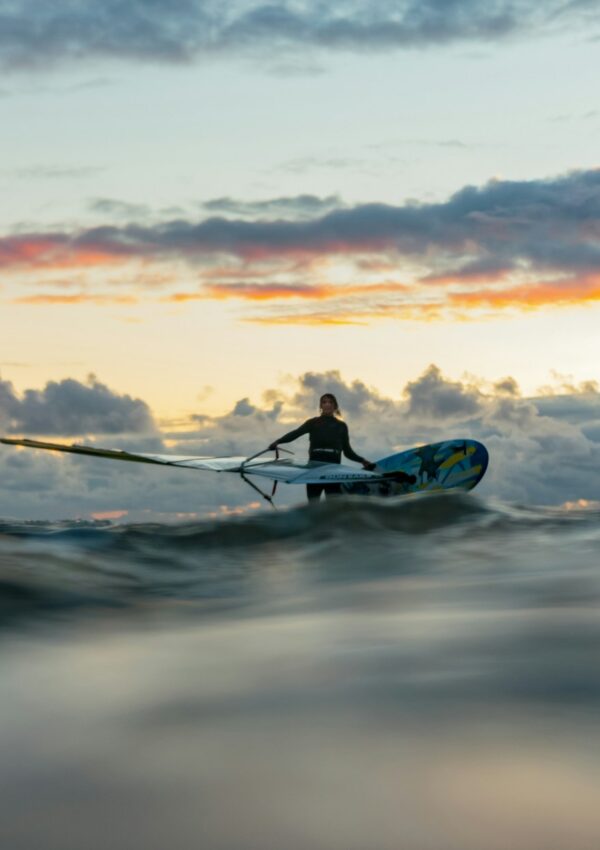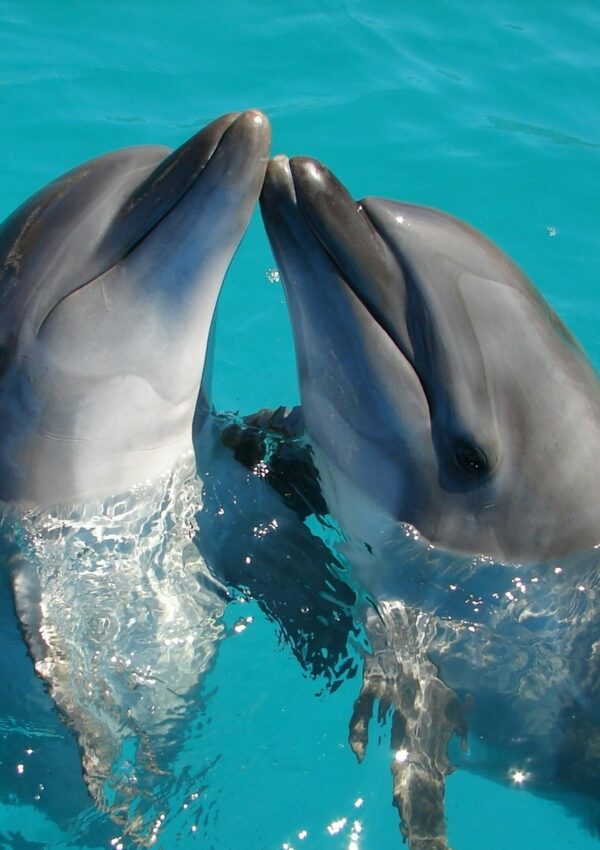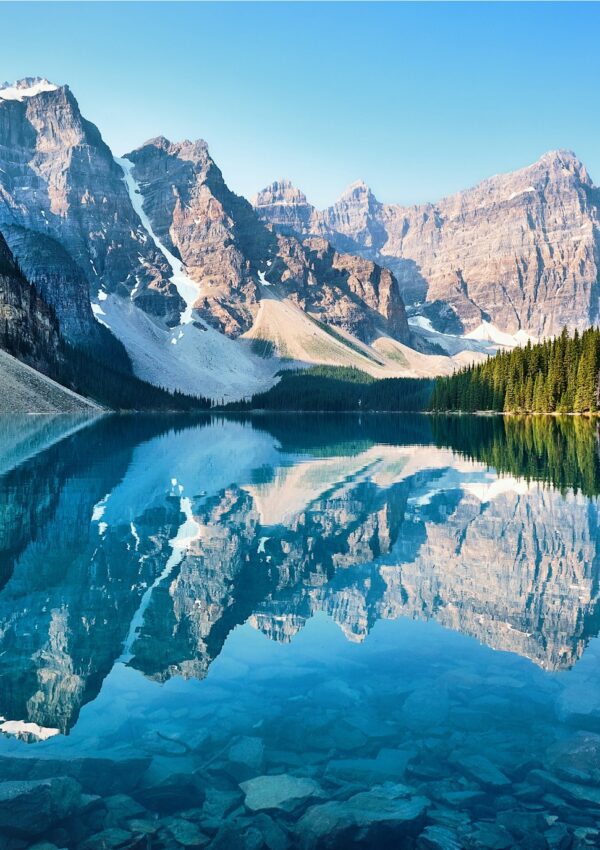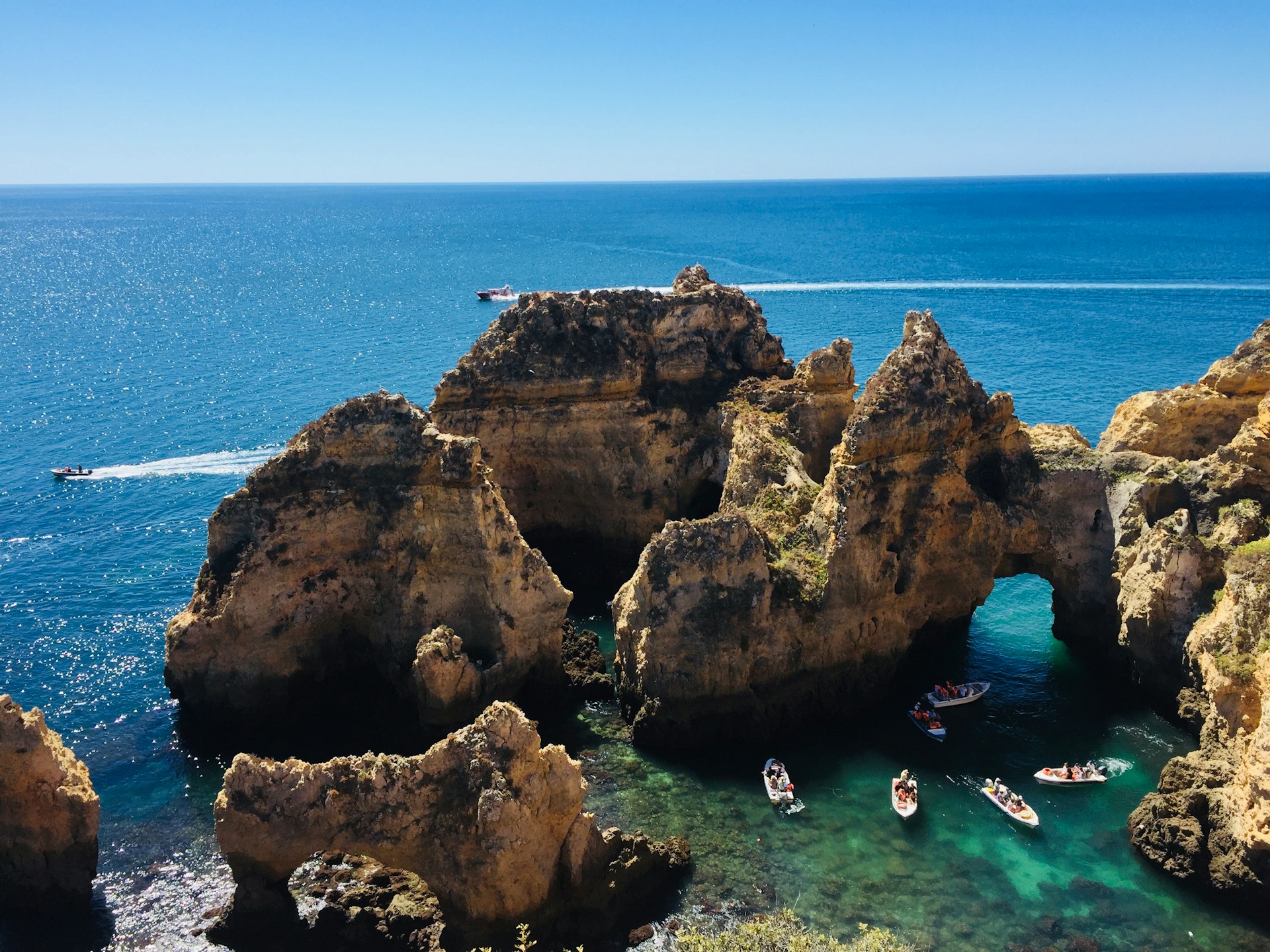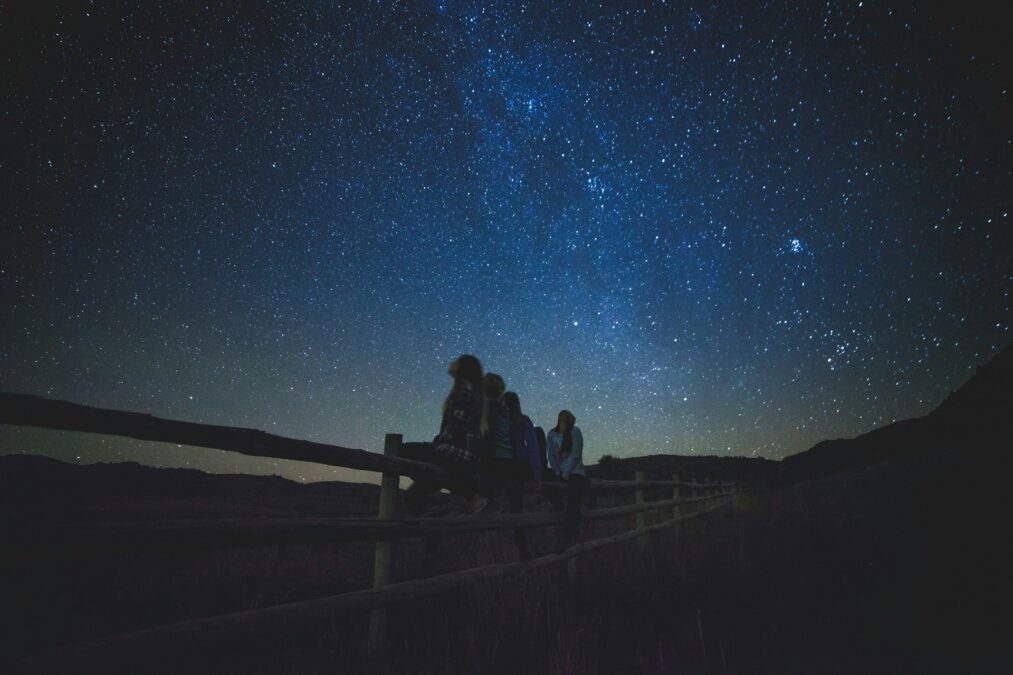
As someone from Calgary who loves stargazing, I know how magical it feels to watch the night sky light up with stars.
However, finding the best spots can be tricky due to light pollution in some areas.
That’s why I decided to dig deeper and put together this easy-to-read guide highlighting the top places to stargaze near Calgary.
Whether you’re looking for a quick evening escape or a weekend adventure, these locations promise unforgettable views of the cosmos.
I hope you have the best time enjoying Calgary’s night sky—and if you know of any other great spots, let me know!
Top Stargazing Locations in and Around Calgary
Here’s a list I put together of the best places to stargaze, ordered from closest to farthest from Calgary:
1. Nose Hill Park
Just a short drive north of Calgary, Nose Hill Park offers one of the best urban stargazing spots in the city.
While it may not be as remote as some other locations, its high elevation and lack of surrounding lights make it a wonderful spot for catching the night sky.
You’ll get awesome panoramic views of the city and see constellations or even the occasional aurora on clear nights.
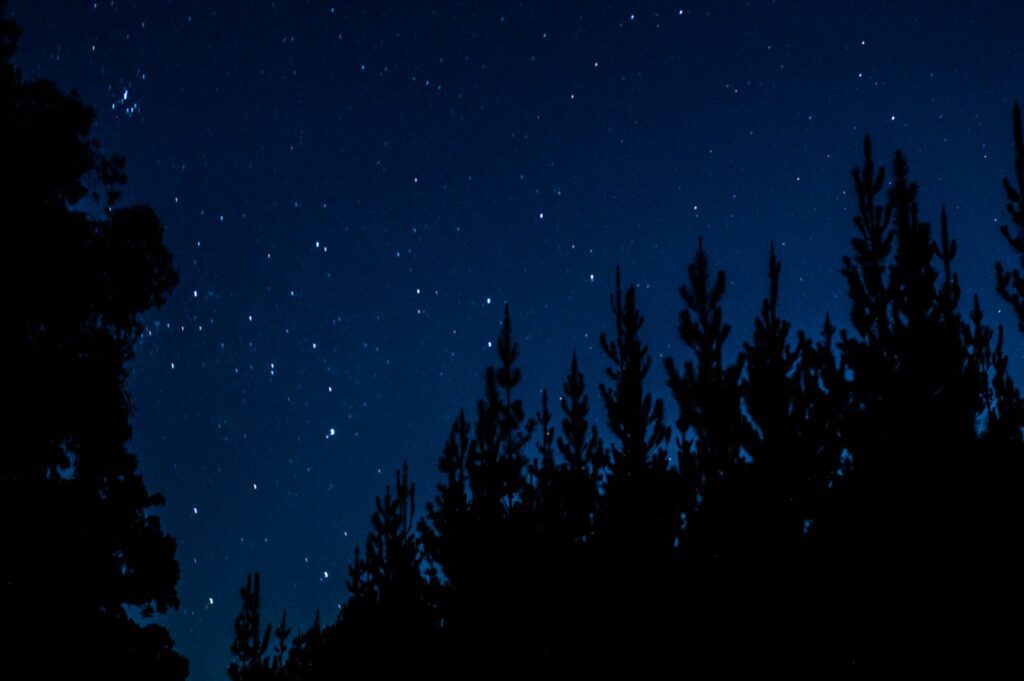
2. Weaselhead Flats
Weaselhead Flats, nestled within Calgary not far from the Glenmore Reservoir, is a hidden treasure offering surprisingly dark skies for an urban area.
Thanks to its wooded surroundings and distance from major lights, it’s an ideal place for casual stargazing.
For the best views, take a stroll along the trails away from the city lights, where you can truly soak in the unobstructed view of the stars.
3. Fish Creek Park
Fish Creek Park, one of Calgary’s largest urban parks, stretches across the city’s southern region and features several great spots for stargazing.
It’s far enough from city lights—especially in areas like Bow Valley Ranch—to still enjoy a relatively dark sky.
The park’s ample open spaces make it perfect for both casual star gazers and those who want to bring out their telescopes for a closer look at celestial wonders.
4. Rothney Astrophysical Observatory (RAO)
Rothney Astrophysical Observatory (RAO) is a fantastic spot located just about 20 km south of Calgary on Highway 22, close to the charming town of Priddis.
It’s super easy to get to by car and offers some of the clearest skies in the area, making it an ideal place for stargazing!
The observatory hosts public viewing nights, giving visitors a chance to peek at celestial wonders through powerful telescopes—it’s definitely a must-visit for anyone with a passion for astronomy.
And with its rural setting, you can enjoy some of the best night skies free from light pollution.
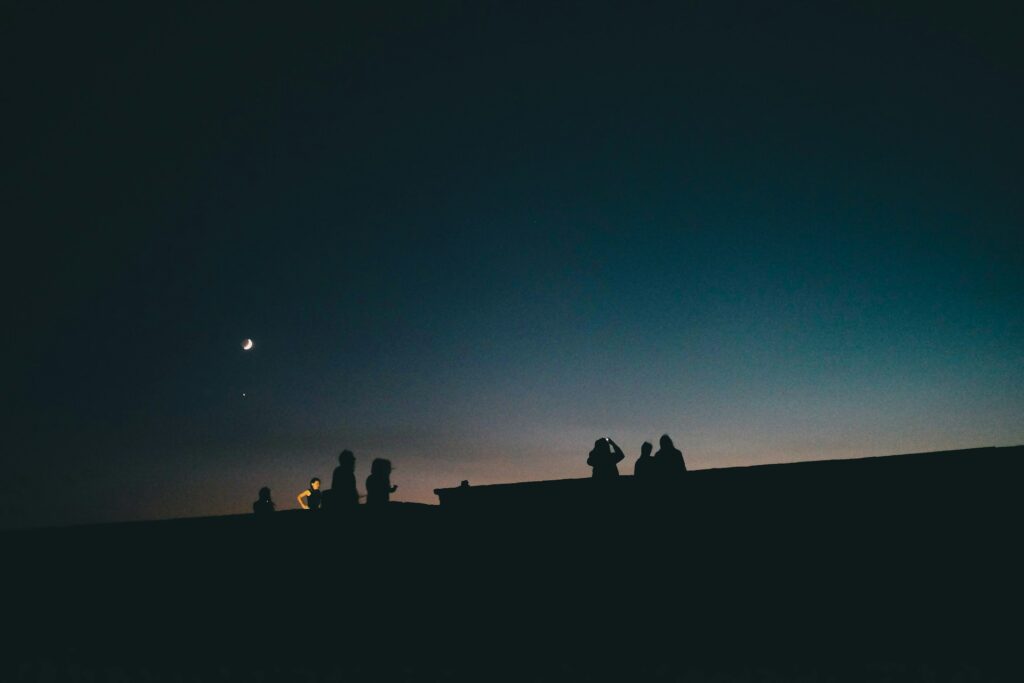
5. Okotoks Big Rock
If you head down to Okotoks Big Rock, located just 20 km south of Calgary, you’ll find a gigantic glacial erratic that’s not only fascinating geologically but also an excellent place for stargazing.
Its isolation from city lights means you’ll enjoy pretty dark skies, making it perfect for spotting stars, planets, and meteor showers.
The clear horizons here are particularly striking, providing a wonderful vantage point for the night sky and auroras when conditions are right.
6. Big Hill Provincial Park
About 30 km west of Calgary near Cochrane lies Big Hill Provincial Park, a lovely retreat for those wanting a peaceful stargazing experience.
With its beautiful natural setting and minimal light pollution, this park provides excellent visibility for stars and celestial events.
It’s a great spot for everyone from casual star enthusiasts to serious astronomy buffs, with plenty of open areas to set up your telescope and enjoy the show.
7. Crossfield
If you venture about 40 km north of Calgary, you’ll discover Crossfield, a quaint small town with very little light pollution.
Its rural charm offers the perfect backdrop for stargazing, with vast open fields providing unobstructed views.
You’ll love the stellar visibility of constellations, planets, and if you’re lucky, even the aurora borealis!
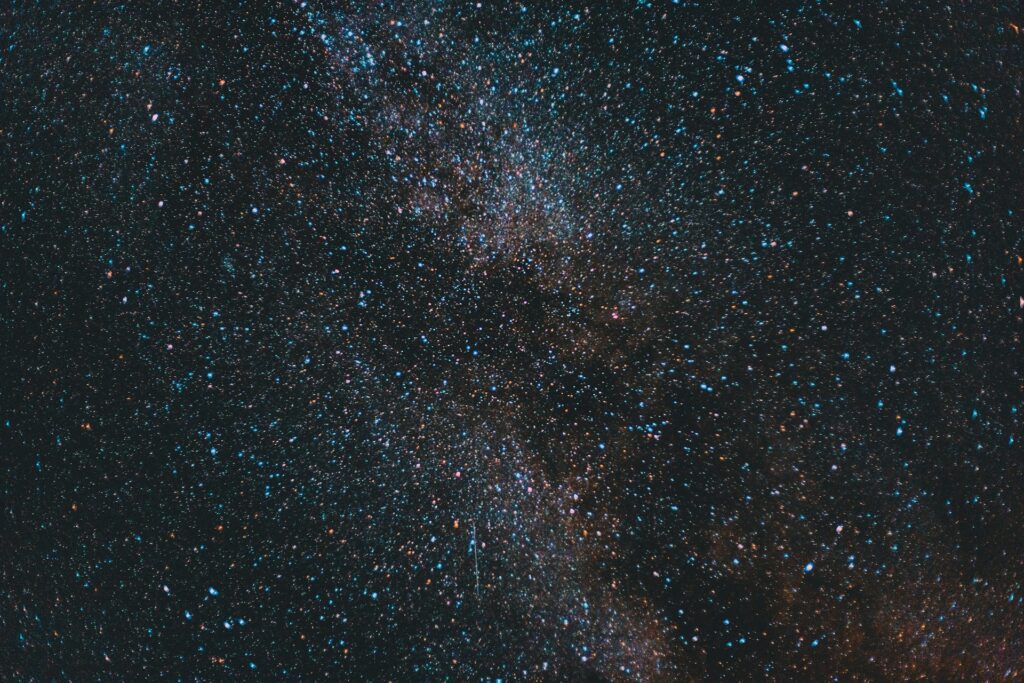
8. Kananaskis Country
For some of the best stargazing around, head to Kananaskis Country, about 50 km west of Calgary in the spectacular foothills of the Canadian Rockies.
The blend of mountain views, remote valleys, and dark skies creates an unforgettable experience.
Popular spots within Kananaskis, like Barrier Lake and Mount Evan-Thomas, promise clear skies and stunning vistas, making it a dream for those who want to enjoy both nature and the beauty of the night sky.
9. Dinosaur Provincial Park
If you’re up for a little adventure, Dinosaur Provincial Park is about 200 km southeast of Calgary, near Patricia.
Known for its stunning badlands landscape, this UNESCO World Heritage Site offers a one-of-a-kind stargazing experience.
Imagine camping under a breathtaking night sky in such a remote and awe-inspiring setting!
The minimal light pollution here is perfect for catching glimpses of the northern lights and the breathtaking Milky Way.
10. Dark Sky Country
Don’t forget about Dark Sky Country, which stretches north and south of Calgary, including the Canadian Badlands and parts of the Foothills region.
This area is home to several Dark Sky Preserves, such as Jasper National Park and Beaver Hills Biosphere, and is perfect for enjoying the Milky Way, northern lights, and meteor showers away from light pollution.
With its pristine, unpolluted skies and tranquil settings, it’s a fantastic destination for serious stargazers!
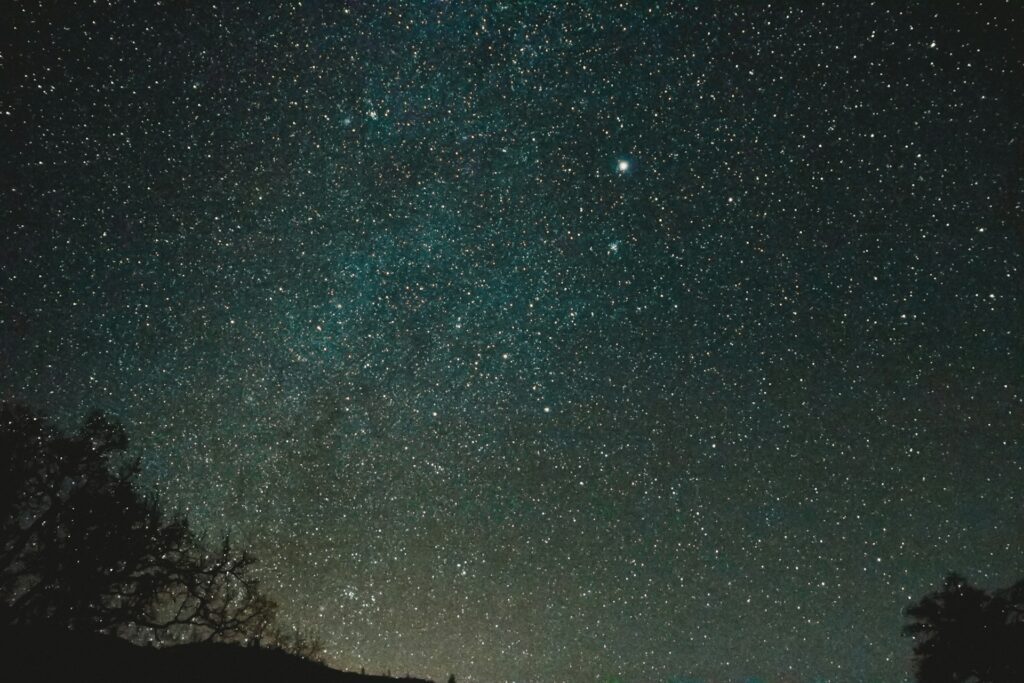
Alberta’s Dark Sky Preserves
Alberta is home to five designated Dark Sky Preserves, ideal for stargazing and northern lights enthusiasts:
- Jasper National Park: A prominent Dark Sky Preserve, known for its clear skies and mountain views, hosting the annual Jasper Dark Sky Festival in October.
- Wood Buffalo National Park: Canada’s largest national park and a UNESCO World Heritage Site, it offers pristine dark skies for stargazing.
- Cypress Hills Interprovincial Park: High elevation and low light pollution create excellent stargazing conditions.
- Beaver Hills Biosphere Reserve: A UNESCO biosphere known for its landscapes and dark skies, popular for stargazing.
- Lakeland Provincial Park: An excellent, lesser-known stargazing destination with minimal light pollution.
Camping Under the Stars
Some campgrounds near Calgary for stargazing include:
Writing-on-Stone Campground
Location: Near the town of Milk River, about 300km southeast of Calgary.
Cost: Unserviced: $26/night; Powered: $33/night.
Two Jack Lakeside Campground
Location: Banff National Park, 10 km from Banff, near Lake Minnewanka.
Cost: Unserviced: $30.50/night
Jarvis Lake Campground
Location: Kananaskis Country, 50 km west of Calgary.
Cost: Unserviced: ~$20/night.
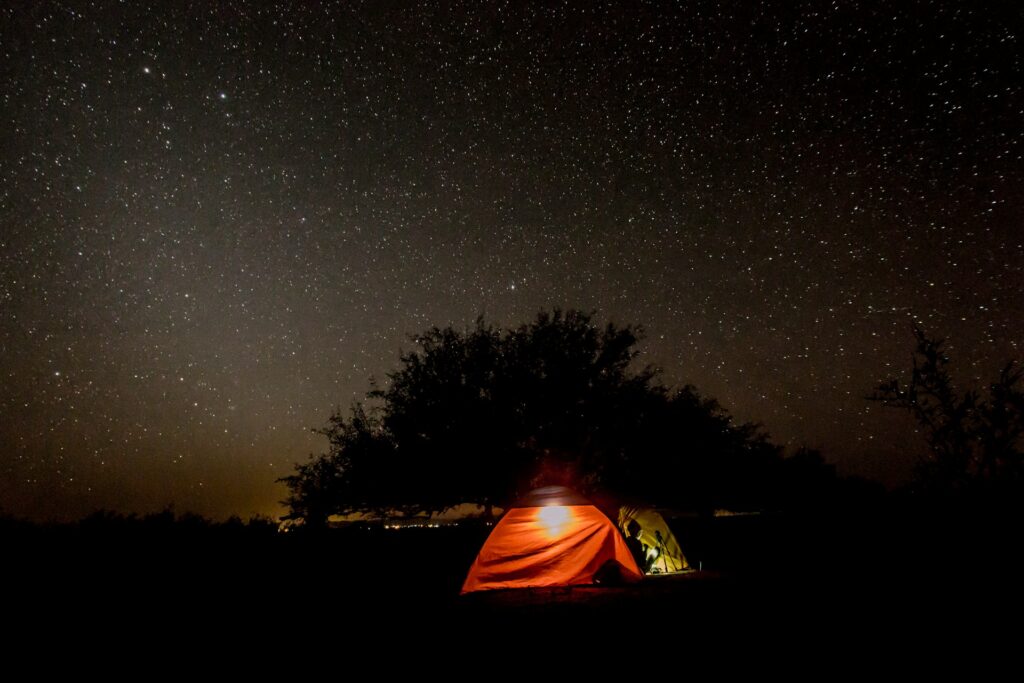
Featured Events
Jasper Dark Sky Festival (October)
The Jasper Dark Sky Festival, held annually in October, celebrates stargazing with activities such as workshops, lectures, and unique stargazing experiences.
Highlights include Star Sessions atop Whistlers Mountain, a Drone Light Show, interactive science demos, and Symphony Under the Stars.
Attendees can also explore the Jasper Planetarium, which hosts special events like solar eclipses and space talks during the festival.
To learn more you can visit Foundry Events.
Best Ways to Enhance Your Stargazing Experience
- Get away from city lights: Venture into rural or protected areas.
- Brush up on your physics: Learn the science behind the stars and northern lights.
- Take a guide: Join an expert-led tour for the best spots and insights.
- Sneak a peek: Bring binoculars or a telescope for close-up views.
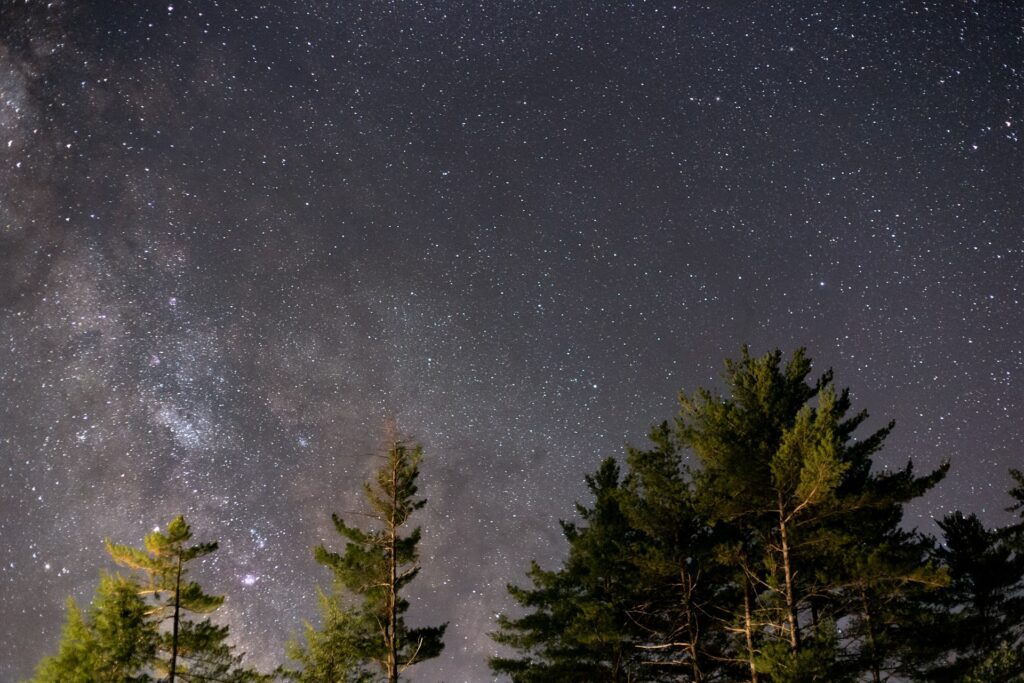
Frequently Asked Questions
When is the best time to see the northern lights in Alberta?
The prime time is from late September to early April! Look for clear, dark nights, especially between 10 PM and 2 AM, when the aurora activity really kicks in.
What are the best locations in Alberta for stargazing and seeing the northern lights?
Jasper National Park, Elk Island National Park, and Wood Buffalo National Park are fantastic choices. Don’t overlook hidden gems like Kananaskis and Dinosaur Provincial Park, which also offer dark skies and breathtaking auroras!
Can I see the northern lights from major cities, or do I need to travel to remote areas?
It’s pretty tricky to spot the northern lights in cities due to light pollution. Your best bet is to venture out to remote or dark-sky areas to really boost your chances of a great view.
What should I bring for a stargazing trip?
Make sure to bring warm clothing, a red flashlight, a star map or a stargazing app, a tripod and camera for capturing those amazing moments, and maybe even a telescope or binoculars for that up-close detail.
What factors impact northern lights visibility in Alberta?
Things like clear weather, low light pollution, solar activity (you can check that using the KP index), and staying away from full moon nights—since they can drown out the auroras—all play a part in visibility.
Are there observatories open to the public?
Absolutely! The Rothney Astrophysical Observatory near Calgary and the TELUS World of Science in Edmonton often have public stargazing and educational events that you can check out.
Tips for photographing the northern lights or dark skies?
Definitely! Use a tripod, set your camera for a long exposure (about 5-20 seconds), crank up the ISO (between 800-3200), and open that aperture wide to capture the vibrant colors of the auroras and the details of the stars.
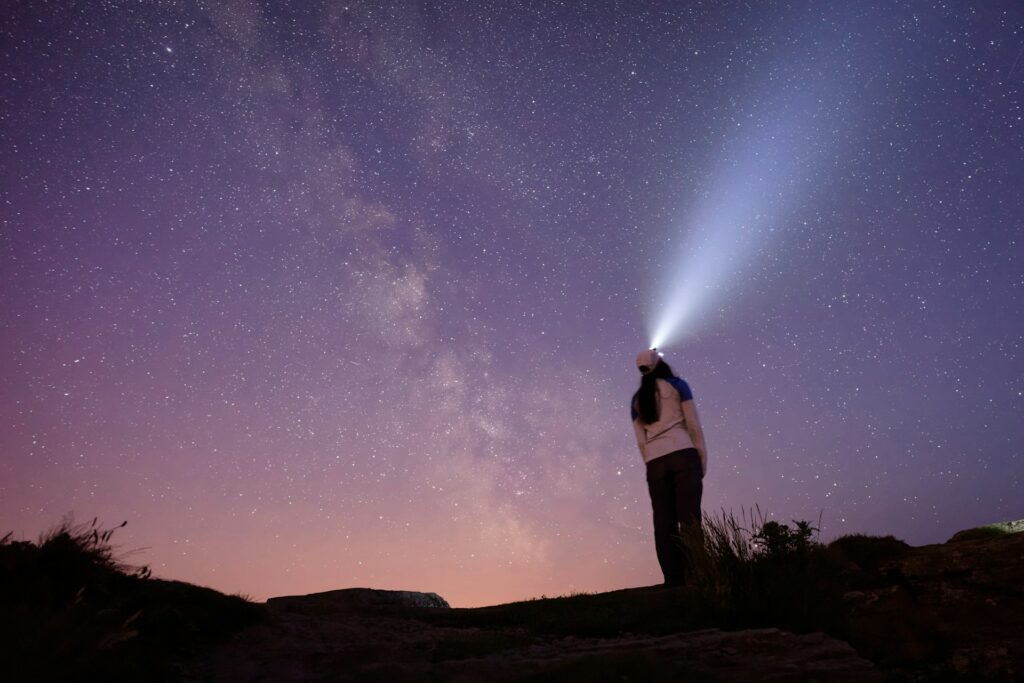
Conserving the Night Sky
Let’s keep our night sky beautiful! Here’s how to help preserve Alberta’s dark skies for everyone to enjoy now and in the future.
Exciting Dark Sky Preservation Projects:
- Ann & Sandy Cross Conservation Area
- Foothills Municipality Dark Sky Initiative
- Royal Astronomical Society of Canada
- Weaselhead Glenmore Preservation Society
Want to Know More About Lighting That Supports Dark Skies?
These factors play a key role in making sure lighting is both effective and gentle on our beautiful night sky.
This approach is commonly embraced in dark sky initiatives aimed at safeguarding areas from unwanted light pollution.
Exterior Light Dark Sky Compliance
- Aims to reduce light pollution and preserve the natural darkness of the night sky.
- Ensures outdoor lighting minimizes glare, light trespass, and skyglow.
- Involves using fixtures that direct light downward and limit excessive brightness.
BUG Rating (Backlight, Uplight, Glare)
Standardized system for evaluating outdoor lighting’s contribution to light pollution.
- Backlight (B): Measures light spilling behind the fixture; poor control can waste energy and disturb areas.
- Uplight (U): Assesses light directed upward; contributes to skyglow and obscures stars.
- Glare (G): Evaluates harshness of light; lower glare ratings are better for stargazing.
As we look up at the night sky together, it’s such a beautiful reminder of how vast and incredible the universe really is—and how lucky we are to have so many amazing stargazing spots right here near Calgary!
Whether you’re staying local or heading out to Alberta’s famous Dark Sky Preserves, there’s always something new and exciting to discover.
I really hope this guide encourages you to grab a cozy blanket, bring along your telescope or camera, and go enjoy the enchanting wonders of the stars.
If you have any favorite hidden gems or want to share your stargazing adventures, I’d absolutely love to hear from you!
Until then, here’s to clear skies and happy stargazing!
